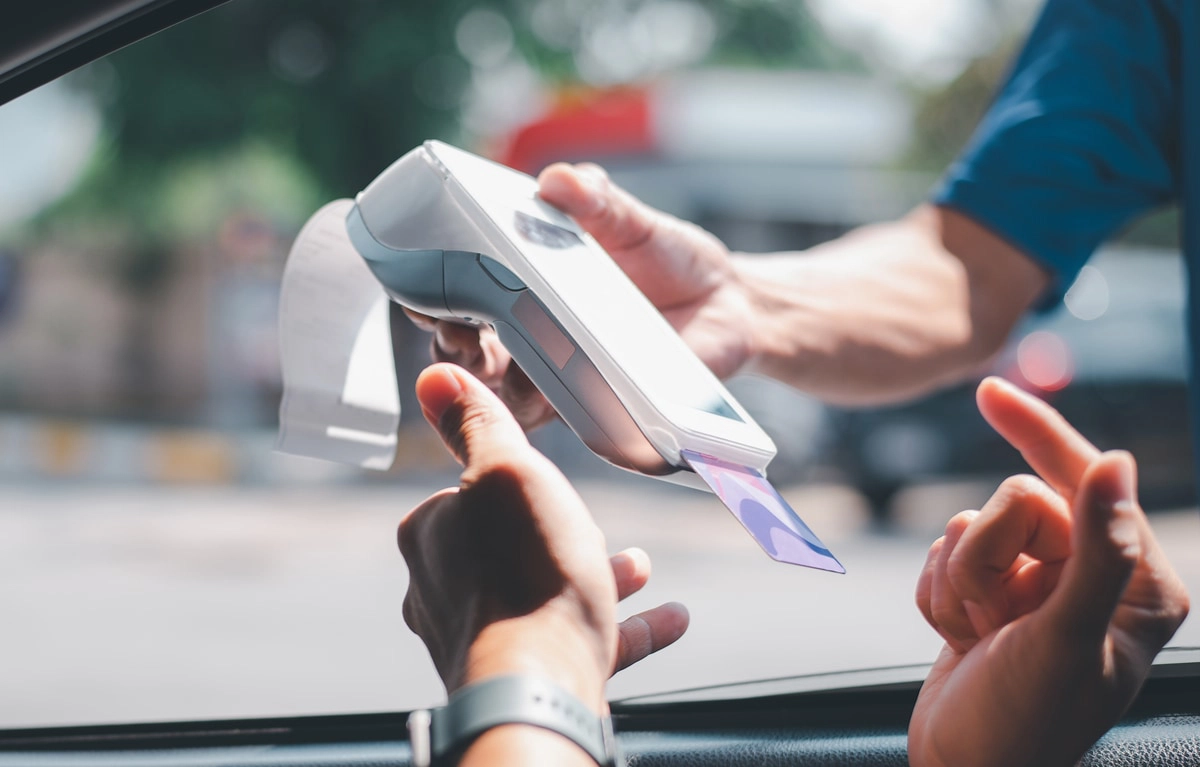Receipt paper is no longer just for cash registers. There are different types of paper rolls for different till setups, so you can’t assume a card machine, receipt printer and POS register use the same paper.
The good news is you don’t have to buy till rolls from a particular brand or shop. You can have a Casio register and Star Micronics receipt printer and still order the receipt paper from the same online supplier, as long as you get a few basics right.
Till rolls for different machines
Before the advent of electronic card machines, till rolls used to be associated with cash registers. Nowadays, these different machines can use till rolls:
- Analogue cash registers
- Tablet POS registers
- Standalone receipt printers
- Card machines
- Portable smart POS terminals
Traditional cash registers with push-buttons are rarer now, so you’re most likely to need receipt paper for a card machine or standalone receipt printer connected to a till. Each machine has its own criteria for paper roll size, type of paper and number of plies.

Smart POS terminals usually have a built-in printer requiring thermal paper rolls.
Range of sizes
Receipt rolls come in different sizes, so it’s important you check the printer what size is accepted.
Freestanding till printers usually require a different size from card machines.
Till rolls are measured by:
- Width: Width of paper sheet.
- Diameter: Central, longest measurement across the circular side.
- Core roll diameter: Diameter of the internal roll.
The width is the most important measurement – if it’s too big, it won’t fit in the machine. Card machines tend to require a till roll width of 57 mm or 58 mm whereas freestanding receipt printers tend to need a 80 mm width. Widths can go down to 37 mm, while the maximum tends to be 80 mm.
It’s best to know the maximum diameter your printer can take, as otherwise you might get a roll that’s too fat to fit into the machine. That said, you can unroll and discard paper until it’s slim enough to go in.
The core diameter is the internal cardboard or plastic roll that the receipt paper is wrapped around. It rarely matters what size this is, as most modern receipt printers do not have a spindle going through the roll. Instead, you just dump the till roll into the receipt roll compartment turning the right side up.
Nowadays, you can get till rolls with no core roll. This is more environmentally friendly, as there’s no waste after the rolled-up receipt paper is used up.
Types of material
Till rolls are not all made of the same materials, and the quality can vary greatly between brands. Most importantly, the method of printing determines the type of paper you should get.
There are two main types of till paper:
- Thermal: Heat-sensitive paper for printing with heat instead of ink.
- Non-thermal: Paper for printing on with ink.
Most receipt printers use thermal till rolls, which tend to have a slight sheen to the surface. With that, you don’t need to buy ink cartridges or ink ribbons as well as paper, so it is arguably the most economical solution.
Thermal paper has, however, a coating of chemicals designed to change colour from heat exposure by a print head. Some of these chemicals include bisphenol A (BPA) and bisphenol S (BPS), both associated with long-term health effects like hormone imbalances and heart disease. What’s more, BPA cannot be recycled due to the risk of the chemical seeping into groundwater or being released in the air.
Although thermal paper does require a coating of dye and reactive acid like BPA, you can get thermal till rolls without BPA or BPS. These can be recycled like normal paper.
In contrast, non-thermal paper (also called bond paper) is any paper good for printing on with ink. It does not contain harmful chemicals – making it recyclable – but its surface is treated to accommodate for high-resolution lines and colours with ink. Most receipt printers don’t work with non-thermal paper any more.
Single- vs multi-ply paper
Another way to distinguish till rolls is how many layers of paper you feed through the printer.
While most modern receipt printers only require a single-ply till roll, there are 2- and 3-ply till rolls for printers producing copies of the top receipt. The top receipt is usually white, while the back paper copies may be pink or yellow to highlight the fact they’re copies.

Examples of a single-, 2- and 3-ply till roll, as seen on PandaPaperRoll’s website.
One ply is ideal for those who just require one receipt that is for the customer. With a 2-ply till roll, the merchant can keep a copy of the receipt in the till drawer, whereas 3-ply receipt rolls allows a business to keep two receipts for accounting.
Are there alternatives for paper receipts?
Instead of printing a receipt, modern POS systems and card terminals typically let you email or text a digital receipt to customers. This is more eco-friendly than using up receipt rolls, but we know that many card machines and cash registers do not give an option to skip the receipt printing.
And with more card machines in use, more paper receipts than ever are being printed. Now that people carry less cash and card machines are almost mandatory, there’s a greater demand for receipt paper.




